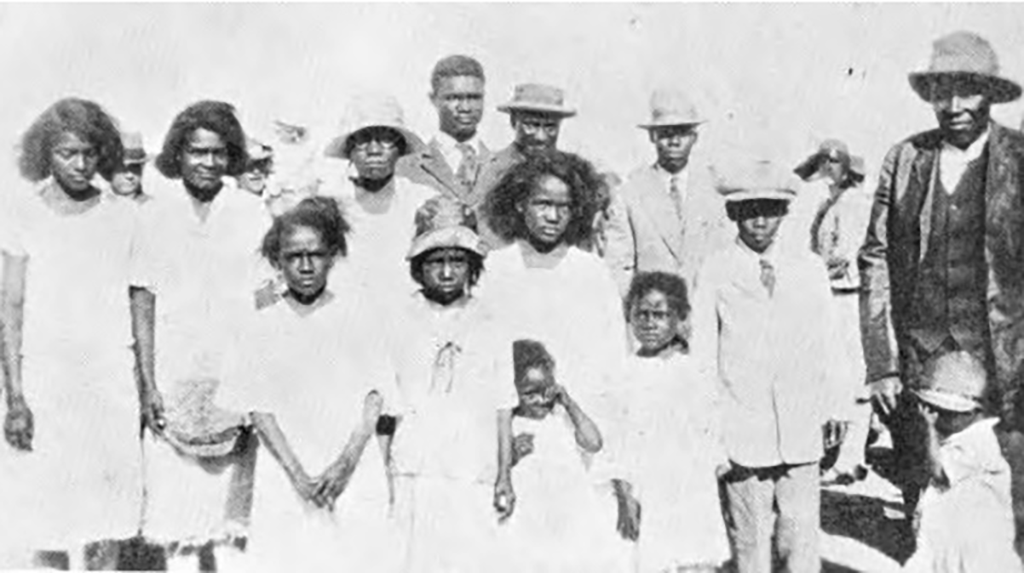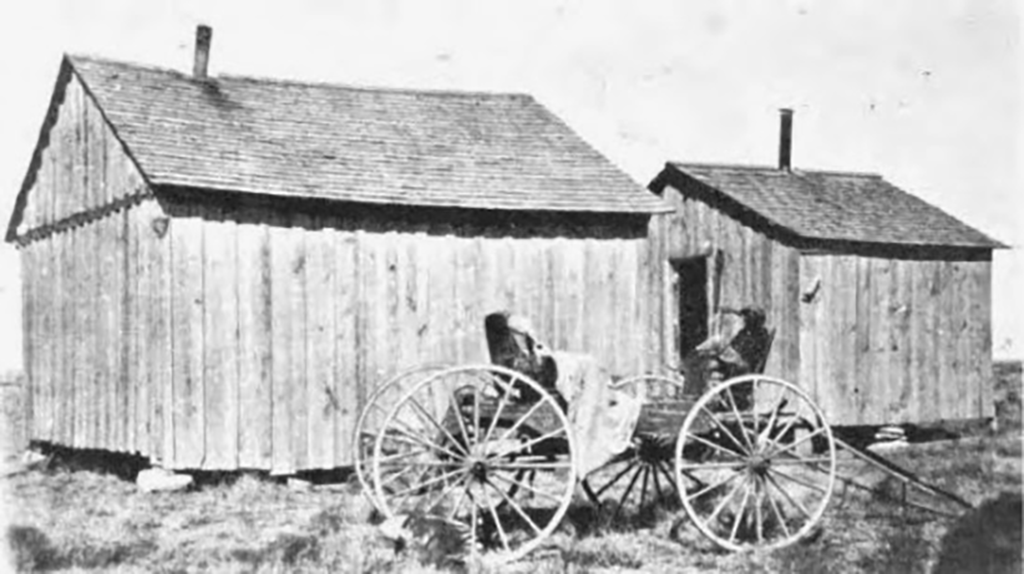The History of New Mexico
Collapse
Expand
-
Chapter 11: Resistance & Resilience in Territorial New Mexico
- Resistance & Resilience in Territorial New Mexico
- Las Gorras Blancas: Millitant Resistance
- Conflict over Language in Schools
- Blackdom: African American Settler Communities
- References & Further Reading
Problematic racial relations persisted throughout New Mexico at the turn of the twentieth century, but for a small group of African American migrants from Georgia, southern New Mexico became a place of hope and refuge. In a region that had recently been characterized by conflicts between Texas cattlemen and nuevomexicano sheepherders, the town of Blackdom was established as a community in which black Americans could build their lives without having to endure Jim Crow segregation.
After his service in the U.S.-Mexican War as a member of Alexander Doniphan’s Missouri Volunteers, Henry Boyer returned home to Pelham, Georgia, where he told his family that New Mexico was a place where discrimination was far less pronounced than in the Deep South. Although he never returned to the lower Pecos Valley, his son, [glossary_exclude]Francis Boyer[/glossary_exclude], led several other families from Georgia to southern New Mexico where he created Blackdom as the first settlement in the New Mexico territory exclusively for African Americans.
Francis Boyer was a well-educated man who had graduated from Morehouse College in Atlanta. His wife Ella Boyer also graduated from college, having attended Atlanta University. Sometime in the late 1890s, Francis witnessed the murder of a black barber who was executed in cold blood because he nicked a white patron’s cheek as he gave him a shave. The murder convinced Boyer of the injustice of the Jim Crow South, and in 1900 he departed on foot with his brother-in-law Daniel Keyes in search of the better conditions in southern New Mexico that his father had so often talked about.
Boyer’s dream of creating a utopian community in the southern New Mexico plains was not unprecedented. Other such towns had been established in places like Dearfield, Colorado; Boley, Oklahoma; and Nicodemus, Kansas. By some estimates, over two-hundred African American colonies were established in the West and Midwest in the late-nineteenth century. Other blacks attempted to settle in Mexico or Africa, building on migratory patterns that began prior to the Civil War.
In October of 1900, after walking the entire distance from Georgia to the Pecos River Valley—a journey of nearly two-thousand miles, Boyer and Keyes drilled the artesian well that formed the basis for the community at Blackdom. Prior to that time, the pair worked various odd jobs, including as cooks and ranch hands, in the town of Roswell. Ella Boyer and the couple’s first seven children (they eventually had eleven) arrived at about the same time that Blackdom started to take shape.
The first crops planted at Blackdom were alfalfa and apple trees. Plentiful harvests indicated that the site would be a prime location for a community. As was the pattern for most townships in the American West at the time, Boyer promoted his burgeoning community in publications throughout the South. In contrast with white townships, Boyer focused his attention on African American communities. He and Keyes personally promoted their venture in Texas and Oklahoma in hopes of attracting other African Americans to Blackdom.
People from Ohio, Mississippi, Texas, and Oklahoma saw the photographs that Boyer and Keyes published and decided to cast their lot with Blackdom. Although promotion efforts began in the early years of the twentieth century, not until 1911 did Boyer and several other prominent residents of the community sign the official articles of incorporation for their township. Blackdom, as defined in the incorporation documents, comprised an area of about forty acres about twenty miles south of present-day Roswell.

Courtesy of Historical Society for Southeastern New Mexico
Those who considered themselves residents of the community lived in a much larger area on farms homesteaded by both blacks and whites. As stated by the Blackdom Townsite Company, their goal was to “maintain a colony of Negroes by means of cultivation of crops, the growing of town and settlements and the general improvements of the colony; to build, erect and equip schoolhouses, colleges, churches, and various education and religious institutions for the improvement and up building of the moral and mental condition of the colony.”24
Including both Blackdom and the neighboring town of Dexter, both townships grew to the size of about 15,000 acres with between twenty and twenty-five families farming the lands. Plentiful rain during the first decade of the 1900s supported the communities, and residents of Blackdom raised plentiful crops of lettuce, tomatoes, and apples. They also took jobs on others’ lands as laborers or as railroad workers to support the farming income.
Not long after the town’s incorporation, James Eubanks opened a small mercantile store, and two churches, a primary school, a post office, and a small newspaper took root in Blackdom. The community produced New Mexico’s first African American lawyer, W. T. Malone, who passed the bar in 1914. At its peak, Blackdom was home to 300 people. The first decade of the twentieth century was characterized by above average rain, but by 1911 or so normal precipitation patterns set in. By 1915, drought set in.
Despite such successes, the lack of water devastated Blackdom just a few short years later. The Pecos River lay too far to the west to be of relief and by the mid-nineteen-teens artesian wells were no longer an option for local farmers. So many wells had been drilled that water ceased to flow from them by 1920. Also, worms destroyed the apple crop and a law passed in the early 1920s banned further drilling for water. Not long thereafter, the Boyers and many other settlers left Blackdom in search of new opportunities. They found what they were seeking at the town of Vado, about fifteen miles south of Las Cruces.

Courtesy of Historical Society for Southeastern New Mexico
Blackdom was a short-lived experiment, but an important one in the history of New Mexico. The Boyer family found freedom to build a community there, and the initiative of Francis Boyer led many other African American families to participate. Although the desert proved more than the community could handle, its members migrated to other settlements in the West, including Vado, where they maintained their right to an economic livelihood. Descendants of Francis Boyer are still proud of his efforts to overcome discrimination and create a place for their family that allowed them to make a living.
By 1912 the hopes of nuevomexicanos, Pueblos, Navajos, African Americans, and Anglos became a reality when New Mexico was granted admission to the United States as a full-fledged state. With the achievement of statehood, it seemed that the promises of the Treaty of Guadalupe Hidalgo would finally be fulfilled. Yet land grants remained contested and much of New Mexico’s population remained in crippling poverty. Such problems have plagued the fledgling state from its entrance into the Union to the present day. The next chapter examines the achievement of statehood and its residents’ efforts to address the problems that continued even after that goal was attained.